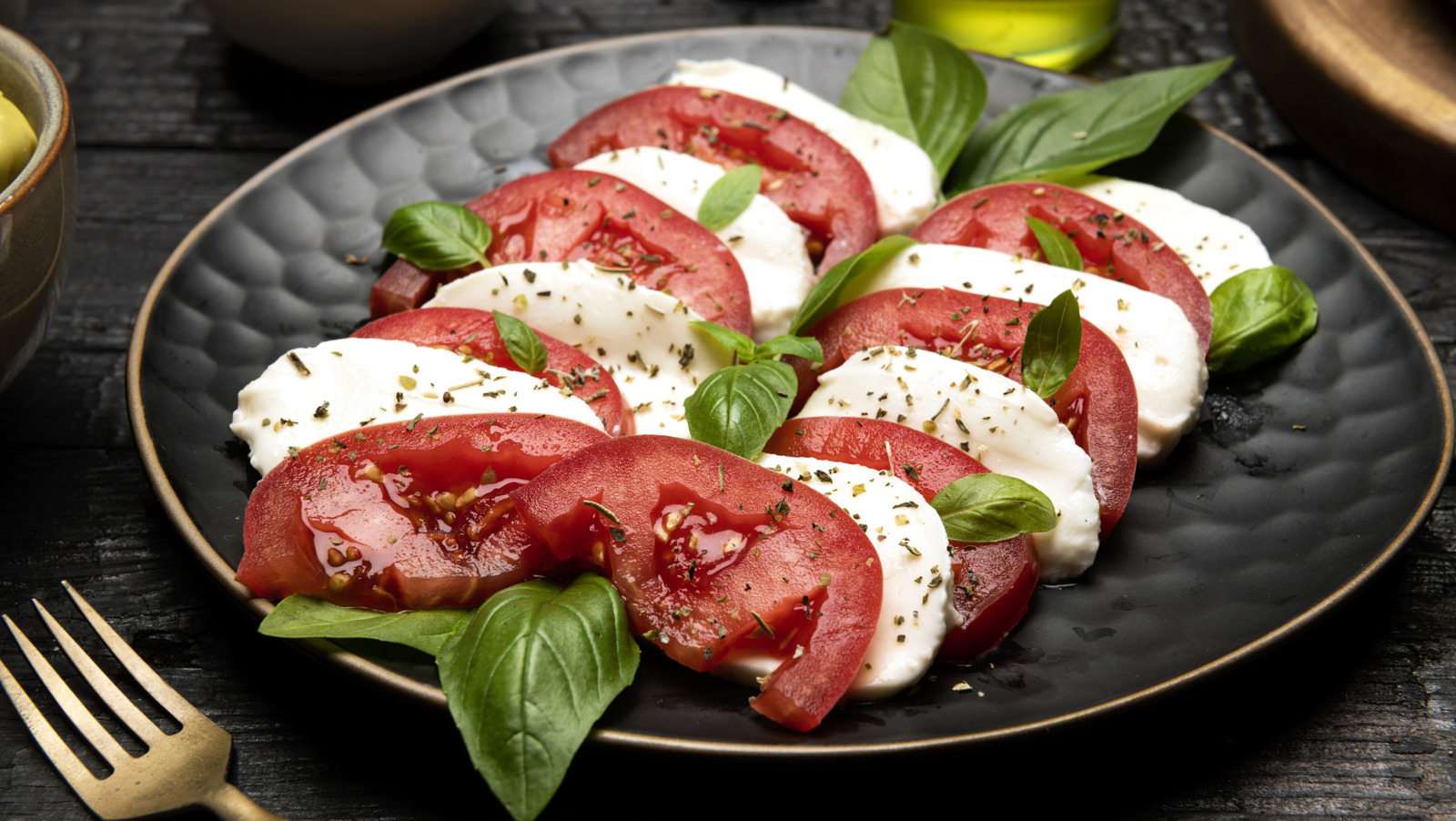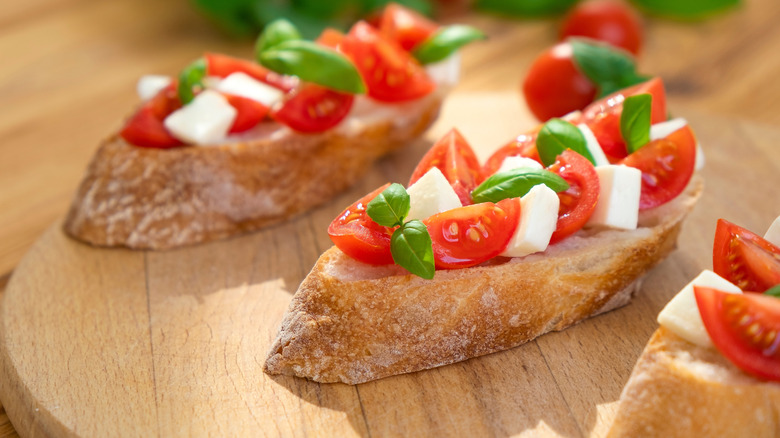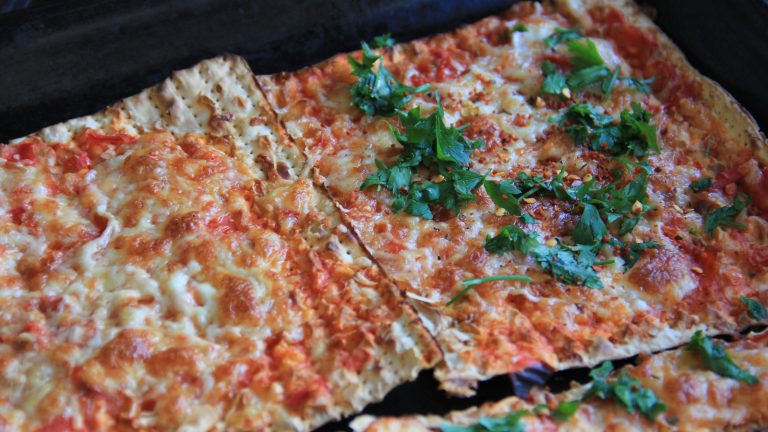Italian cuisine undoubtedly receives the recognition it deserves, as evident in the plethora of restaurants that include many of the country’s staple dishes in their offerings. Whether it be timeless favorites like simple, classic bucatini cacio e pepe or creamy-textured risotto, it’s not uncommon to find at least one Italian entrée listed on an establishment’s menu. Nor is it surprising to find Italian food in the starter section either. Namely, you’ll often come across bruschetta or caprese — two of the most well-loved appetizers, or antipastos, you’ll try from the European region.
For anyone who has tried both of these options, they’d know that caprese and bruschetta have tons of overlap in terms of what goes into them. This makes it easy to mistake one for the other. However, the biggest distinguishing factor is how each of them is served and plated. These differences make them individualized dishes that slightly vary in aesthetic and finished flavor.
Bruschetta and caprese share ingredients but present them differently
These Italian appetizers are fairly straightforward in that they both contain only a few ingredients, and they happen to be the same components. Caprese has the simpler presentation of the two dishes, alternating slices of tomato and slices of buffalo mozzarella. Fresh basil leaves are inserted between the slices, and the whole arrangement of ingredients is drizzled with extra virgin olive oil, salt, and black pepper. Balsamic glaze is commonly added, too. It’s traditionally eaten in this form as a sort of salad, though people have conjured up pesto caprese paninis and even cheesy caprese chicken bakes as well.
Bruschetta is essentially the same thing, though a piece of crispy bread is used to hold all the elements together. Slices of a crusty bread, such as ciabatta or sourdough, serve as the base. These slices are toasted and rubbed with a clove of garlic for extra flavor, then topped off with the same exact things that comprise a caprese salad. The addition of the warm, crunchy carb makes for a different textural experience than its deconstructed counterpart.






